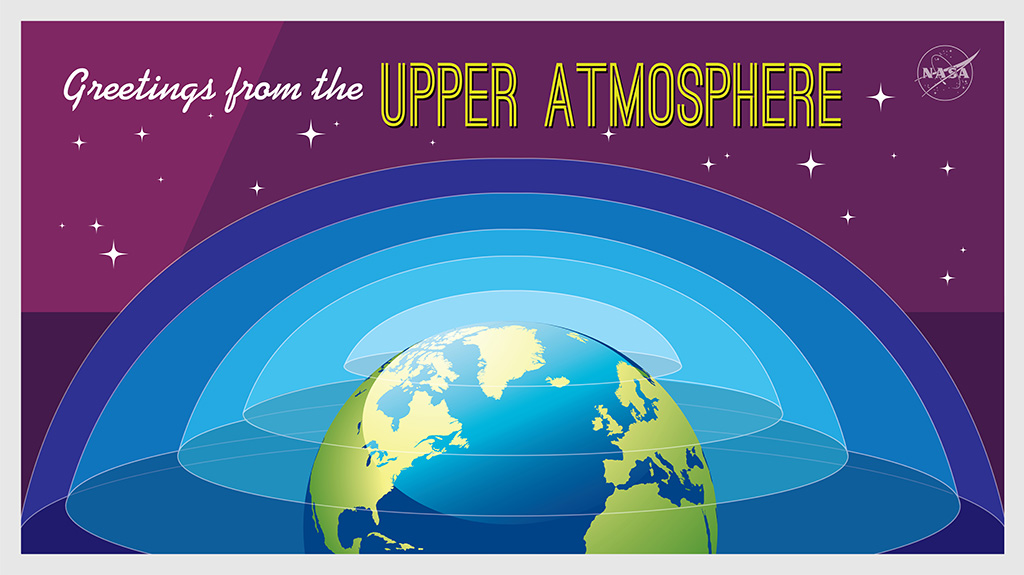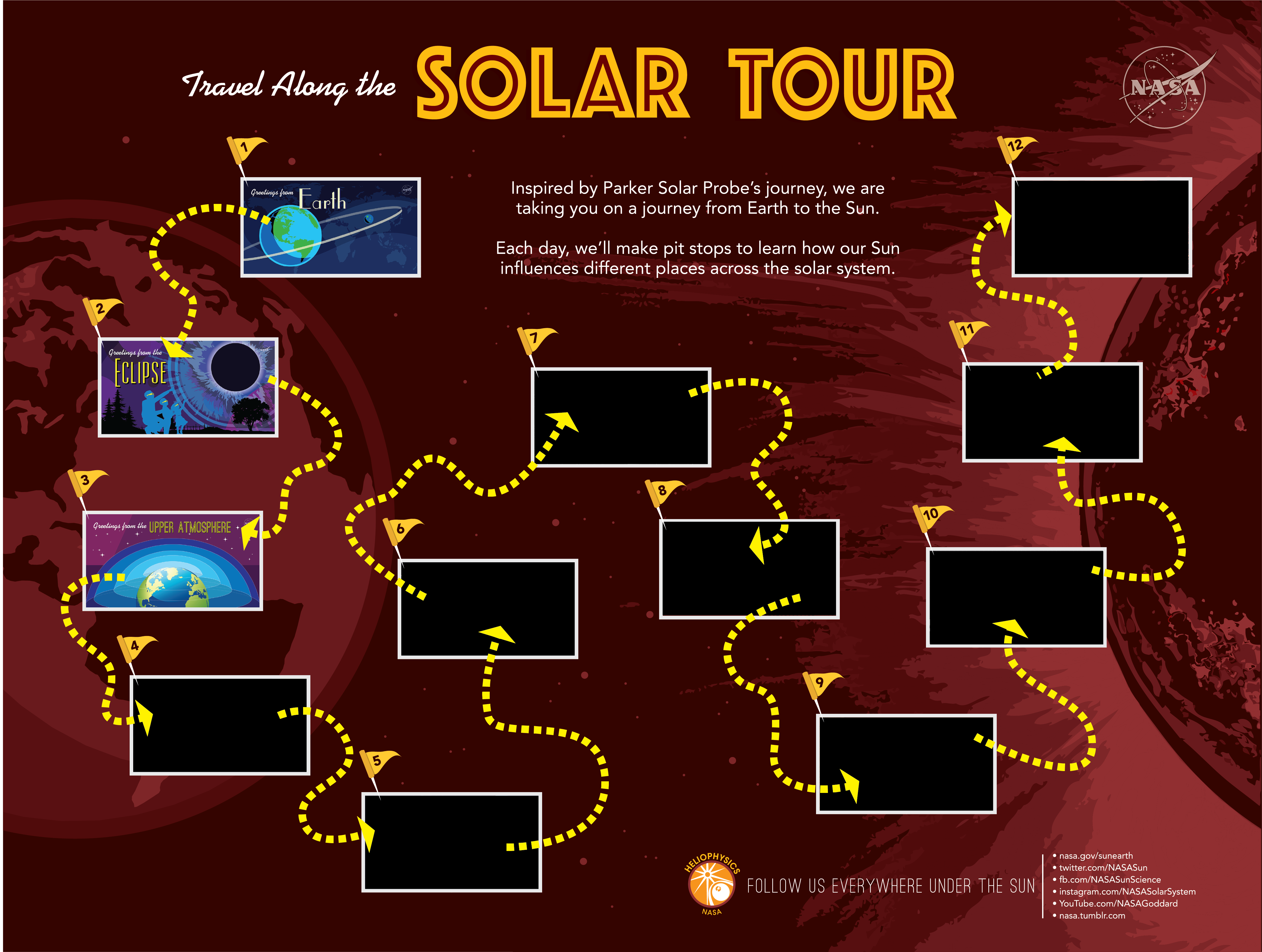Solar Tour Pit Stop #3: Earth’s Upper Atmosphere
Earth’s Interface to Space

Welcome to Earth’s upper atmosphere, where things get weird.
Home to:
- Earth’s hottest (4,500 degrees F) AND coldest (-120 degrees F) temperatures
- 50 tons of incoming meteors, daily
- Air that is literally electric
- Satellite communications
The ionosphere
Lucky for us, the Sun’s most harmful rays don’t reach the ground.
Instead they’re absorbed by Earth’s upper atmosphere. That extra energy breaks atoms into charged particles, creating the electrifying ionosphere.
Earth’s highest clouds
These wispy, high-flying clouds are a perfect blend of Earth and space: they form when water vapor from our air freezes around tiny grains of space dust.
Known as polar mesospheric clouds, NASA’s AIM satellite studies them for subtle clues about changes in our upper atmosphere.

Living in the upper atmosphere
It might look like space out the window, but the International Space Station orbits within Earth’s upper atmosphere.
Did you know that astronauts can allocate 3.3 lbs (1.5 kg) for personal items? What would you bring to the ISS?

Follow NASA’s #SolarTour on Twitter and Facebook!


























